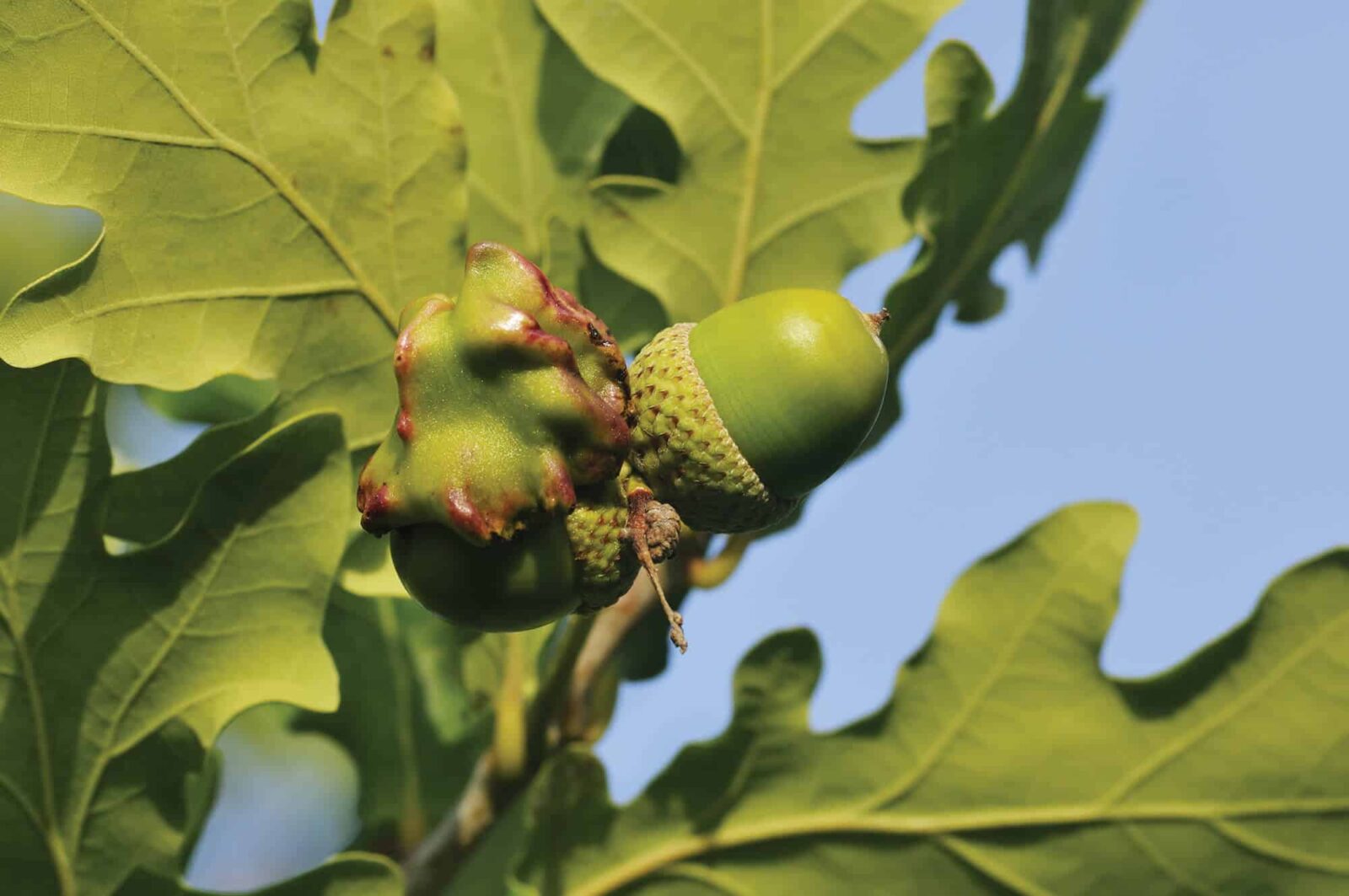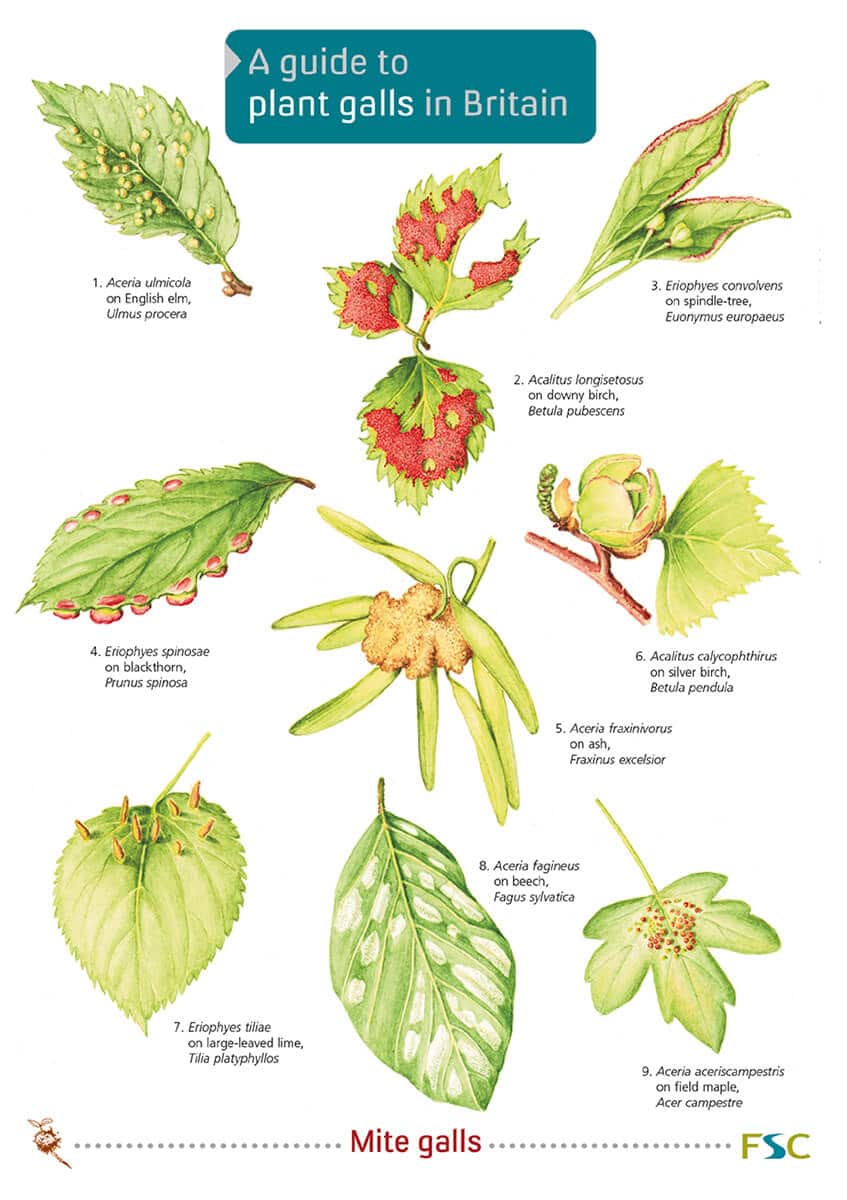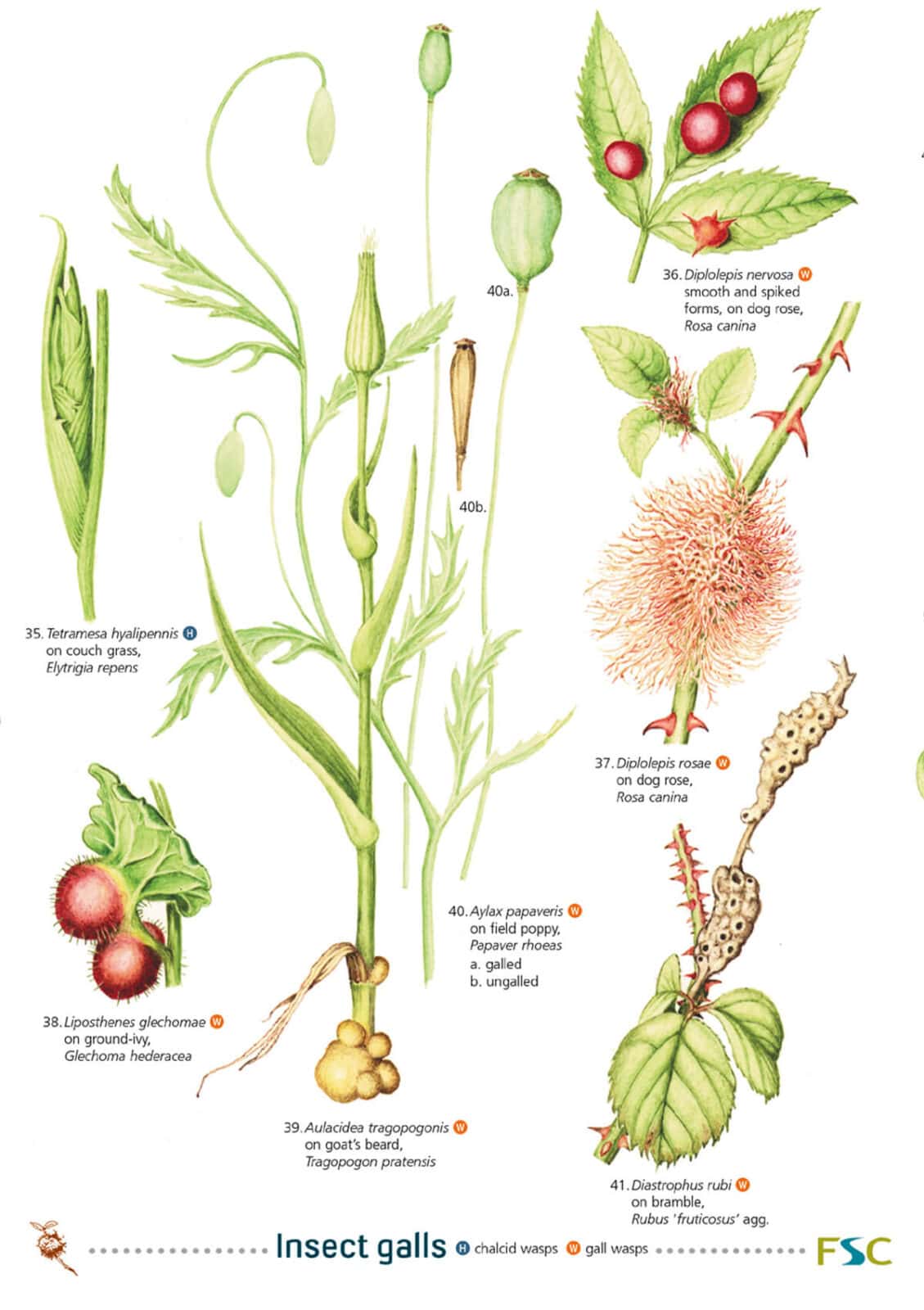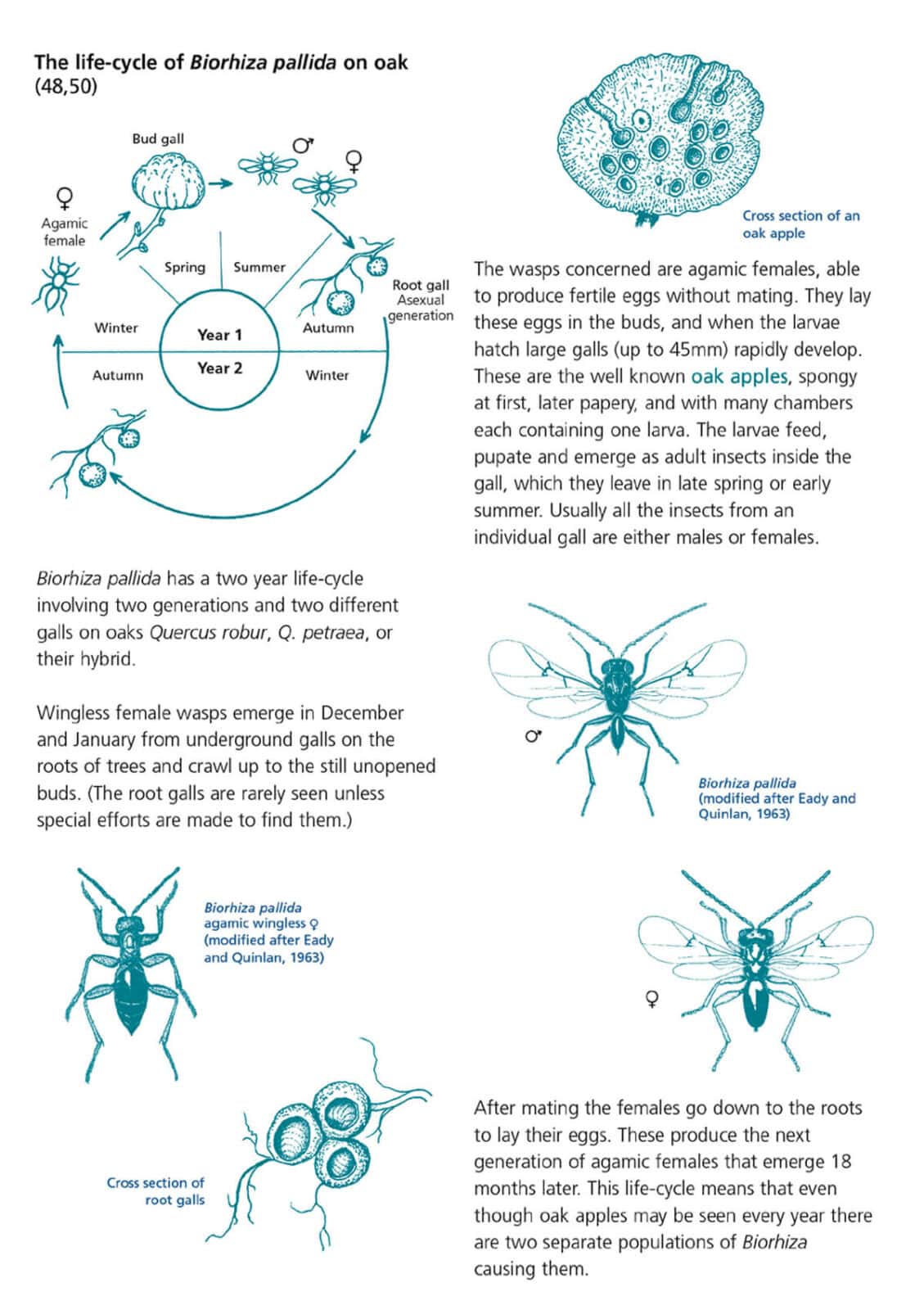Plant galls guide
The WildID Plant galls guide features colour illustrations for 69 common plant galls. Accompanying text gives further background information on gall causers.
Here’s something different to look for, especially in late summer and autumn. Galls are abnormal growths, mainly on plants. Often they are highly colourful and come in bizarre shapes. Common plant galls include oak apples, witch’s brooms and robin’s pincushions.
Plants produce galls under the influence of another organism (the gall causer). This gall causer interferes with the host plant’s normal growth and development. It diverts resources to produce the gall and provide itself with food. In some cases this leads to distortion or swelling. But in other cases it results in growths that are unlike anything normally produced by the plant. Galls occur on all parts of host plants, including stems, leaves, fruits or roots. Gall causers include aphids, mites, psyllids, gall-wasps and sawflies.
Plant galls occur almost anywhere that plants grow. You can make a good list in a domestic garden, especially where there are mature trees or wild flowers. Other fruitful sites are scrubby woodland with open glades and rides, and green lanes between old hedges. Many galls are host -specific. So it is worth looking wherever the host plant is common. In general, oaks and willows are particularly rich in galls.
Unlike popular groups like birds and butterflies, plant galls are poorly known. Naturalists can make significant contributions through accurate observation. Plant galls also lend themselves to project work e.g. on distribution in different areas and on varying abundance over time.
The guide was co-created with the British Plant Gall Society.





